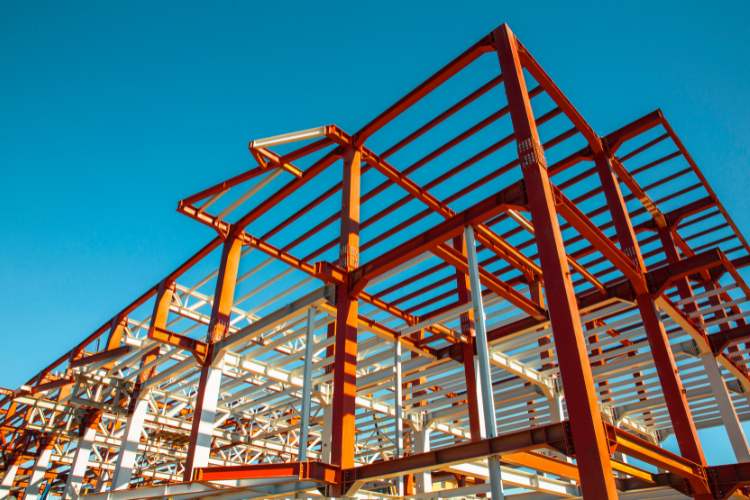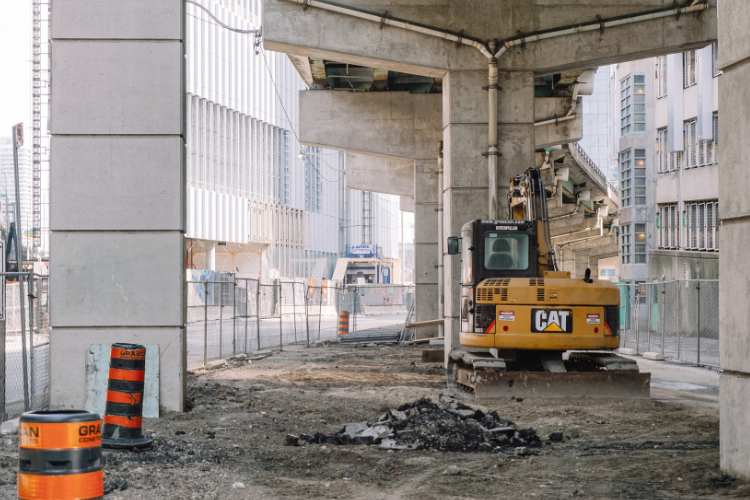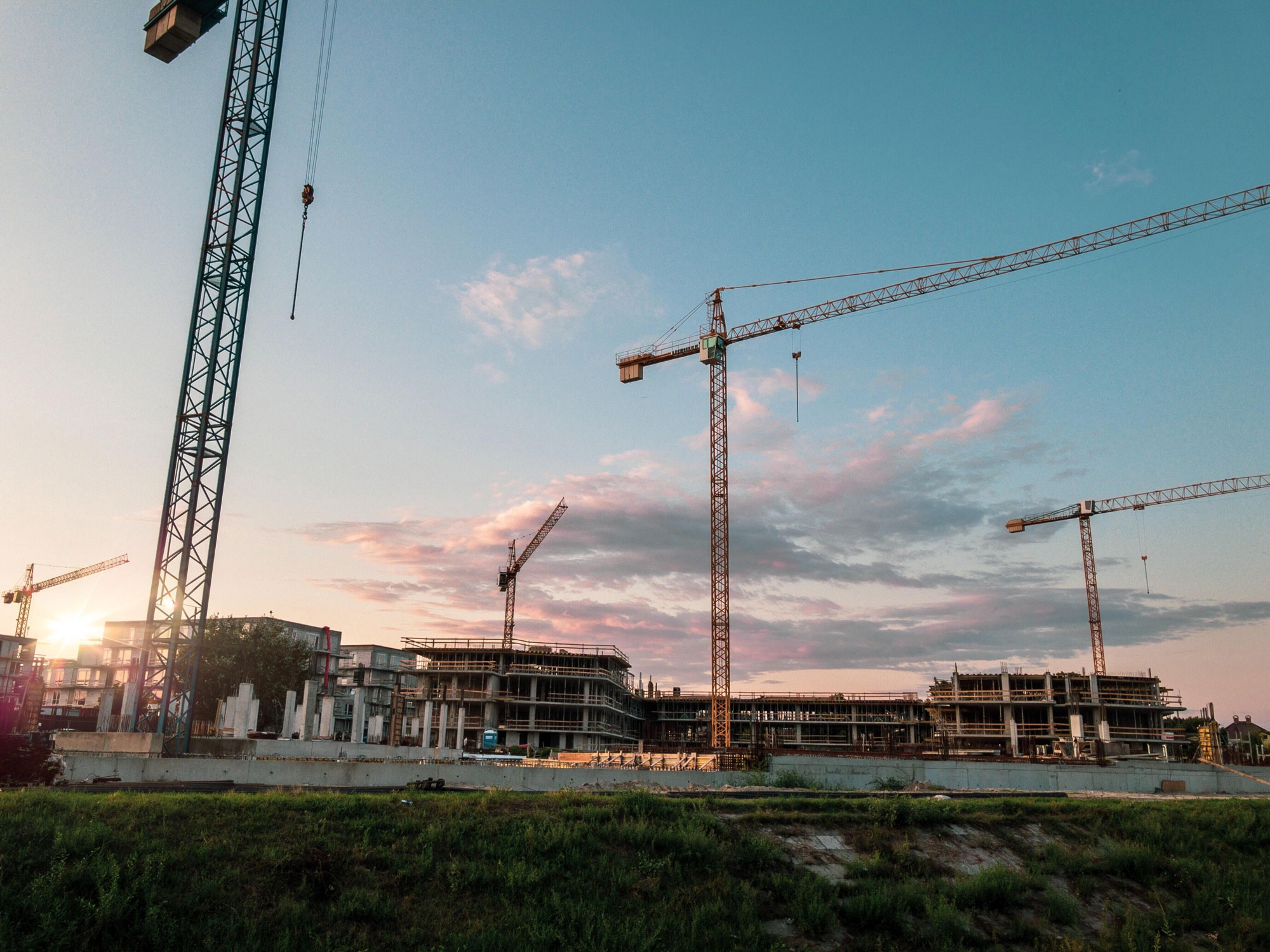Concrete is widely used as a building material in commercial construction because of its exceptional durability and strength. However, several issues can affect it, from exposure to severe conditions to poor construction practices.
These factors can cause concrete to deteriorate, leading to defects on the surface or subsurface. As a subcontractor, you should always be on the lookout for these defects to ensure your company’s work meets the required standards and avoids costly mistakes.
If you encounter any concrete defects, you should consult a certified engineer and architect to investigate the issue and recommend the best course of action. So how do you identify a concrete defect? Let’s take a look at some of the most common types of concrete defects and how to repair them.
Table of Contents
What are concrete defects?
Concrete defects are cracks, chips, spalls, holes, and other imperfections that can appear in the concrete. These defects can occur during the mixing, placement, or curing process and after construction.
The damages can be caused by several factors, including expansion and contraction of the concrete as it cures or by temperature changes in the environment. They also often arise from poor-quality materials or workmanship, including poor structural detailing and design.
Spalling concrete
What is concrete spalling?
Concrete spalling is a defect where the surface of the concrete begins to flake and peel away. This can be due to chemical reactions, natural weathering, or natural aging. It indicates a severe weakness in some parts or the entire structure.
How Concrete Spalling Occurs
Spalling occurs when water penetrates the pores of the concrete and expands upon freezing, causing cracks that grow vertically and horizontally along their length. These cracks continue to grow, become unstable, and crumble away from each other due to thermal expansion forces.
How to repair spalling in concrete
- Install a new overlay on your concrete.
- Use a color-matching compound to patch the spalled area.
- Remove and replace the whole slab.
Cracks in concrete
What are concrete cracks?
A concrete crack is a whole or partial split of concrete into two or more portions caused by fracturing or breaking.
How concrete cracks occur
Concrete tends to shrink as it dries, allowing moisture to accumulate inside and causing the material’s surface to crack. They can also be caused by frost heave, improper mixing, humidity changes, poor quality concrete, or high water content.
The cracks can be small or large depending on the amount of moisture present at the time.
How to repair cracks in concrete
- If the cracks are small, fill them with masonry cement.
- If the cracks are extreme, remove and replace the concrete.
- If you don’t like the appearance of the repairs, go for concrete resurfacing.
Concrete honeycombing
What is concrete honeycombing?
Honeycomb is a rough, rocky surface that develops on the concrete when air holes exist between the course and the aggregate. Even when concrete looks normal on the outside, honeycombing can still occur underneath the visible layers of concrete.
How concrete honeycombing occurs
Honeycombing happens because of poor concrete pouring and working techniques, too much water in the concrete mix, insufficient formwork rigidity, and other factors.
How to repair honeycombing in concrete
- Fill the voids with a suitable material such as epoxy resin.
- Inject a grout or mortar into the voids.
- Place a layer of fresh concrete over the affected area.
- Apply a sealant or coating to the surface of the concrete.
Concrete crazing
What is concrete crazing?
Concrete crazing is the formation of a network of fine random splits or fissures on the surface of the concrete, resulting from surface layer shrinkage. Rarely deeper than 30mm, these fissures are more visible on surfaces that have been floated or troweled with steel.
How concrete crazing occurs
Crazing happens when the concrete’s top surface quickly hardens due to high temperatures, excessive water in the mix, or inadequate curing.
How to repair crazing
- Fill in the cracks using a concrete sealer to prevent water from getting into the concrete and causing further damage.
- Fill in the cracks with a concrete patching compound to provide a smooth surface for painting or staining.
- Replace the concrete if the crazing is severe. This is a more expensive option but will provide a long-lasting solution.
Concrete blistering
What is concrete blistering?
Blistering is the formation of hollow bumps of various sizes on the surface of the concrete, resulting from trapped air under the completed concrete surface.
How concrete blistering occurs
Concrete blistering occurs when there is excessive concrete mix vibration, too much-trapped air in the mix, or poor finishing. Concrete top surface blistering can also occur when there is excessive water evaporation.
How to repair blistering
- Chip away the damaged concrete and replace it with new concrete.
- Apply a concrete repair mortar to the affected area.
- Inject a concrete repair grout into the affected area.
- Apply a concrete sealer to the affected area.
Concrete delamination
What is concrete delamination?
Concrete delamination is the separation of the paste layer at the surface, which results in an unbonded concrete layer between it and the slab body.
How concrete delamination occurs
Delamination occurs when the top layer of the concrete hardens before the underlying concrete does. It happens because the air and water that leaks from the concrete beneath these two surfaces strike one another, creating space.
This can be due to poor quality concrete, improper curing, poorly mixed concrete, or exposure to extreme weather.
How to repair delamination
- Patch after the surface layer is removed and the underlying concrete is properly cleaned.
- Grind and overlay a new surface in case of extensive delamination.
- Sandblast to remove rust from steel delaminated surfaces caused by steel corrosion.
Concrete dusting
What is concrete dusting?
Dusting or chalking is the formation of a fine powder on the surface of the concrete when it begins to disintegrate.
How concrete dusting occurs
When concrete with bleed water on it is floated and troweled, the extra water is mixed back into the surface, further reducing the concrete’s strength and resistance to wear, leading to dusting. Concrete dusting is most commonly caused by surface deterioration due to weathering, wear, and tear, or improper maintenance. The concrete may also deteriorate if it contains too much water, which can cause the surface to crumble.
How to repair dusting
- Grind off or shotblast the thin layer of paint to expose the solid concrete underneath and potentially create a new surface with good wear resistance.
- Apply a surface hardener.
- Paint the concrete surface with acrylic, urethane, or epoxy.
Concrete curling
What is concrete curling?
Curling is the upward or downward movement of edges or corners that causes a concrete slab to be bent into a curved shape.
How concrete curling occurs
Concrete curling occurs primarily because of temperature or moisture variations between the top slab surface and slab foundation.
How to repair curling
- Pond the slab to reduce curl, then sawing additional contraction joints.
- Grind slab joints where curling has occurred to restore serviceability.
- Inject a grout to fill voids under the slab to restore support and prevent the break-off of uplifted edges.
Concrete Efflorescence
What is concrete efflorescence?
Concrete efflorescence is the whitish powdery deposition that coats unfinished concrete surfaces. It’s salt that has been deposited on the surface of the concrete.
How concrete efflorescence occurs
Efflorescence occurs when vapor, carrying soluble salts, comes into contact with concrete. When the water evaporates, it leaves behind a white, powdery deposit. This defect occurs for several reasons, including poorly sealed or cured concrete, low temperatures, condensation, cracks or voids in concrete, use of salty water during concrete construction and deicing salt on concrete surfaces, and excessive humidity.
How to repair efflorescence
- Apply pressurized water to dissolve efflorescence.
- Brush using a stiff bristle broom or brush.
- Use a mild acid rinse.








